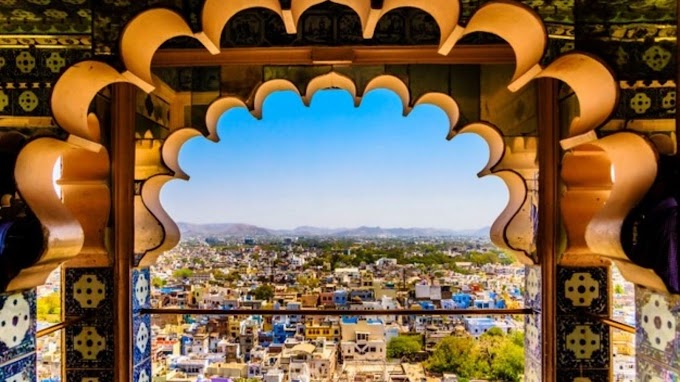Ever located by far western Rajasthan, near the border of Pakistan, Jaisalmer requires trouble to reach but it's surely worth it. Rising out of the flaxen Thar Desert, this astonishing golden sandstone megacity will transport you to another period, back when it was a stop on the Silk Route from Central Asia to China.1 Dominating the geography is Jaisalmer's suggestive 12th-century stronghold, which was formerly inhabited by royal autocrats and is still home to a quarter of the megacity's residers.2 It's one of the last living castles in India and the world and is listed as a UNESCO World Heritage Site.
Planning Your Trip
Stylish Time to Visit Jaisalmer has an extreme desert climate with cold downtime nights, scorching summer days, and veritably little rain. The sightseer season runs from October to March during the coolest corridor of the time. In January, late temperatures drop to around 41 degrees F (5 degrees C), but the days are affable, with highs generally above 68 degrees F (20 degrees C). It's not judicious to visit Jaisalmer from April through August unless you can deal with searing diurnal temperatures above 104 degrees F (40 degrees C). The September shoulder season will still be hot, but it can be ideal for avoiding the crowds.
Language Rajasthani, Hindi, and English.
Currency Indian rupee.
Getting Around Important of the megacity can be covered on the bottom, so do bring comfortable walking shoes. Bikes ( useful for penetrating narrow lanes and avoiding business backups) and motorcycles are also available for rent. Alternately, bus cabs are accessible for short passages and can be readily flagged down. However
Trip Tip Try to catch the fun Jaisalmer Desert Festival, held over three days in late January or February each time.
Effects to Do
Jaisalmer provides an inconceivable occasion to immerse yourself in a piece of living history and learn about the desert culture. The megacity revolves around the stronghold and has magnific 19th-century noble palaces, ornate Jain tabernacles dating back to the 12th century, royal landmarks, and a serene 14th-century man-made lake dotted with small sanctuaries. Evenings over the stronghold are spectacular, as its structure appears to combine with the desert. You will want to devote at least a day to exploring the girding desert geography, too.
Take a guided walking stint of the stronghold and girding vicinity. Several companies offer similar tenures, including this perceptive Fort Heritage Walk by Jaisalmer Magic. There is a maze of shops, caffs, homes, hospices, places of deification, and a gallery inside the stronghold. It's fascinating!
Marvel at the armature and intricate gravestone busts of Patwaon ki Haveli, Nathmal ki Haveli, and Salim Singh ki Haveli palaces. Patwaon ki Haveli is the pick of the bunch if you are short on time or plutocrat.
Go on a camel safari in the desert, or a jeep safari if you do not have an affinity for camels.
Check out our composition about the top effects to do in Jaisalmer for further information.
What to Eat and Drink
Jaisalmer's distinctive indigenous cookery is reflective of the constituents available in the thirsty desert terrain. It's generally submissive and utilizes a lot of beats and hardy grains similar to millet. Ker Sangri is an unusual specialty of the region, made from pickled Indigenous berries and sap that grow wild in the Thar Desert. Try Haldi ki Sabji (turmeric yogurt curry) during downtime. The megacity's most iconic drink is a cooling Makhania Lassi ( sweet buttermilk with dry fruits). Pyaaz ki Kachori, a popular snack of deep-fried confection discs with onion stuffing, is amended on thoroughfares each over the megacity. Original sweets include Ghotua Laddoo and Panchdhari Ladoo (balls of flour, ghee, and spices). Get them from Dhanraj Ranmal Bhatia's sweet shop near the stronghold.
You will no doubt encounter government-authorized bhang shops in Jaisalmer. Bhaang is a paste made from cannabis factory leaves, and it has an ancient connection with Hinduism and Lord Shiva4. It's generally served in drinks during the Holi jubilee. The shops in Jaisalmer vend it in eyefuls, galettes, and lassi (a yogurt-grounded shake). Be careful to consume intemperance, however, because you will not feel the goods straight down.
Jaisalmer is not known for its escapism or expansive range of alcohol, so your stylish best for a memorable evening is to head to a rooftop eatery or bar with stronghold views at eve. Cafe the Kaku near Sunset Point and Helsinki House hostel near Gadi Sagar are both outstanding. The Stacks Bar at the Marriott Resort and Spa is more upscale with amalgamations and fine wines.
Where to Stay
Callers to Jaisalmer are frequently keen to stay within the stronghold, which is accessible as it clearly is charming. Still, it's important to be apprehensive of the environmental challenges the stronghold is facing, particularly damage from drainage and water seepage.5 In addition, keep in mind that availability can be an issue, as buses are not permitted inside the stronghold and bus cabs can only go up to certain points. As a volition, there are numerous atmospheric lodgments for all budgets in the area below the stronghold, and they give a panoramic outlook of the stronghold from their rooftops. Excursionists frequently spend a night or two in the desert near Jaisalmer as well. The maturity of desert camps is positioned around the Sam Sand Stacks. This area is veritably marketable, however; if noise is a concern, choose a camp that is further out from the sightseer mecca there, or stay in the Khuri Sand Stacks.






0 Comments